French Polynesia - April 2023
We took a ten-day cruise among the islands of French Polynesia in April 2023. Islands visited included Tahiti (embarkation and disembarkation), Moorea, Fakarava, Nuku Hiva, Rangiroa, Raiatea, and Bora Bora (where we overnighted). All except Nuku Hiva are in the Windward Islands of the Society Islands of French Polynesia; Nuku Hiva is a member of the Marquesas Islands of French Polynesia. The islands were beautiful and starkly different (from the peaks of Bora Bora, Moorea, Raiatea and Nuku Hiva; to the classic atolls of Fakarava and Rangiroa, each barely above sea level).
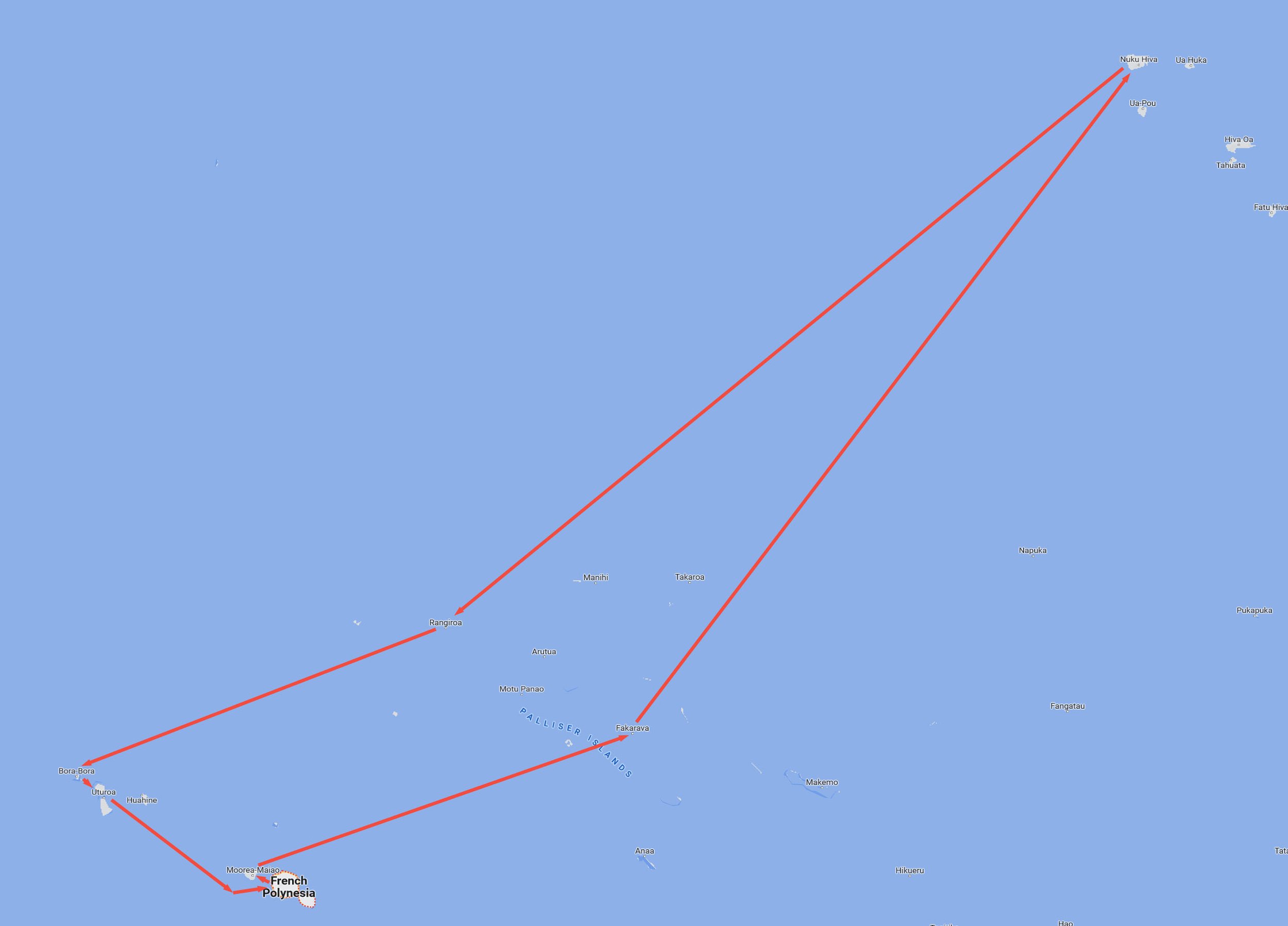
A map of our cruise. The island "French Polynesia" is actually Tahiti.

Chickens were everywhere, to be seen underfoot on all islands visited. So this brightly colored fowl was representative of those encountered on all the isles. (We were told no one eats the wild chickens, their meat being tough and stringy.)

Even trash bins had tattoos. Lots of tattoos, seen everywhere.

The Moorea highlands seen upon arrival, our first stop and a mere few miles west of Tahiti.

An amazing seascape, from Moorea's beaches.

"MS Regatta" seen from Moorea's beach.
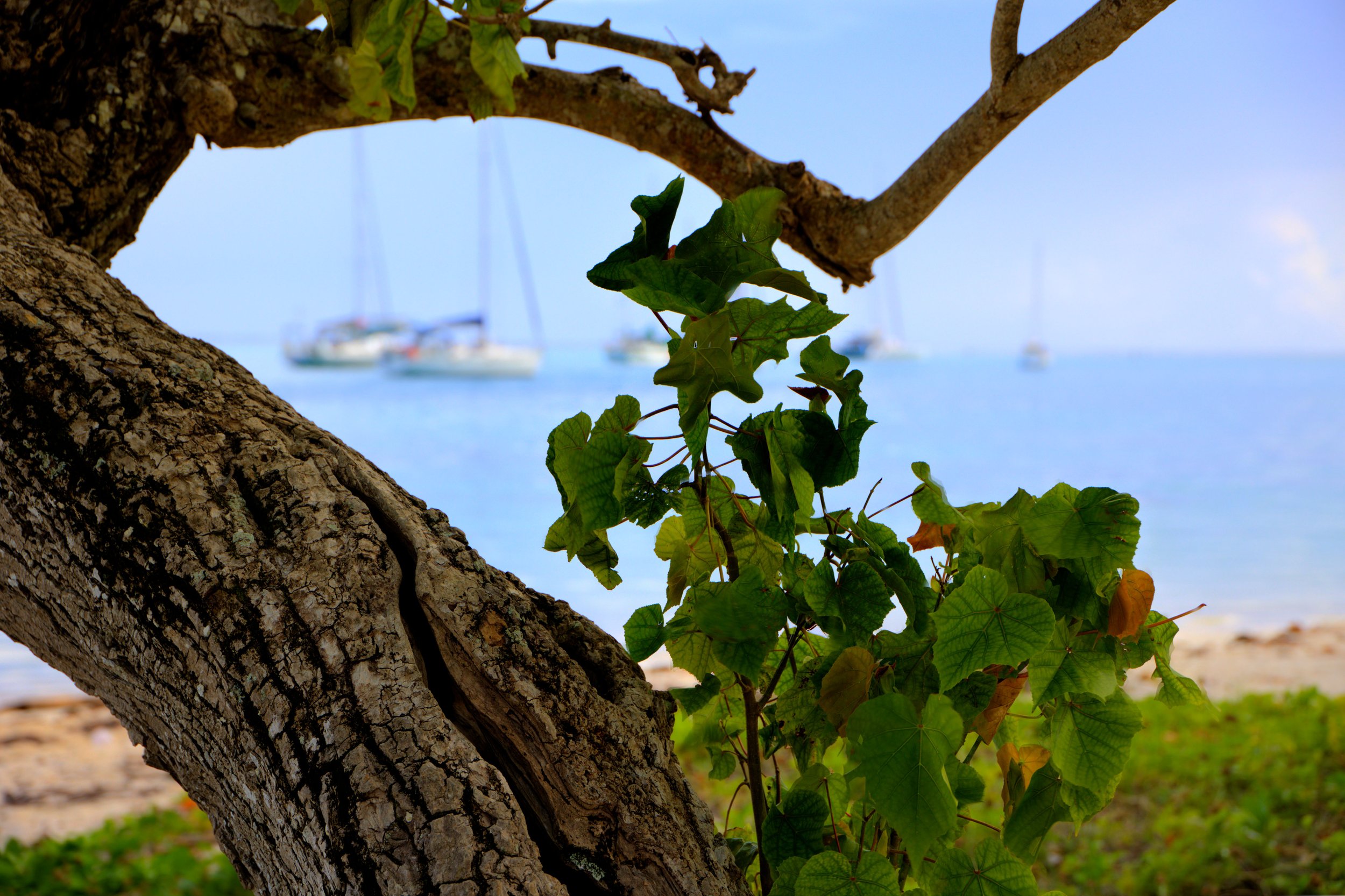
Artistic (???)
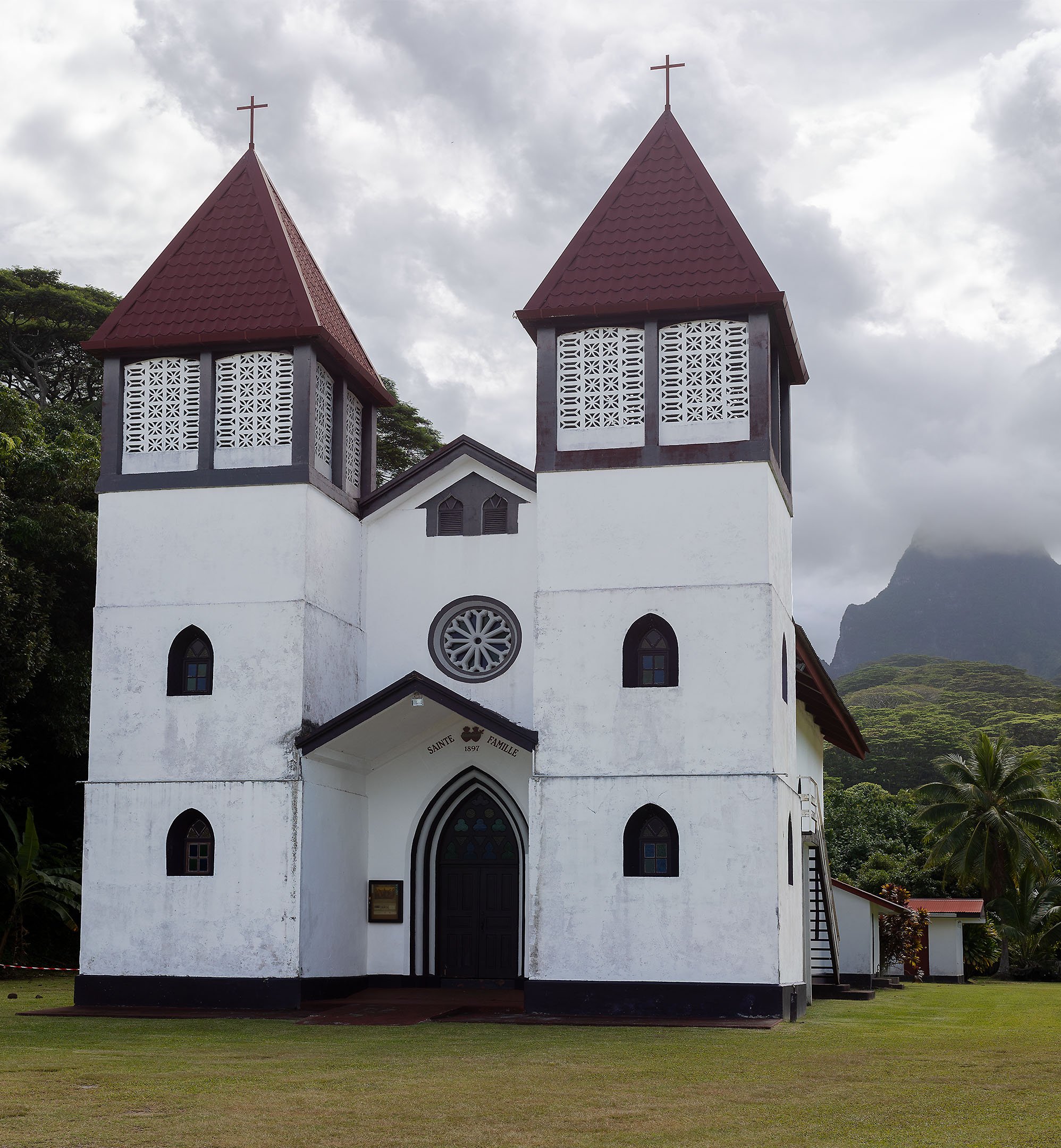
A catholic church not far from where ship's tenders brought us ashore. Catholicism is French Polynesia's dominant religion. The first churches were built atop natives' "marae," places of worship, in order to demonstrate the new religion's superiority to the old.

Our Moorea excursion was a photo tour, of which the foregoing church and this grotto was the second stop. The large rock in front of the cross is modern, a gift from the people of Rapa Nui (Easter Island), the natives among whom are proven distant cousins of the natives of French Polynesia (as well as those of Hawaii and New Zealand -- the Maori). No human sacrifices here.
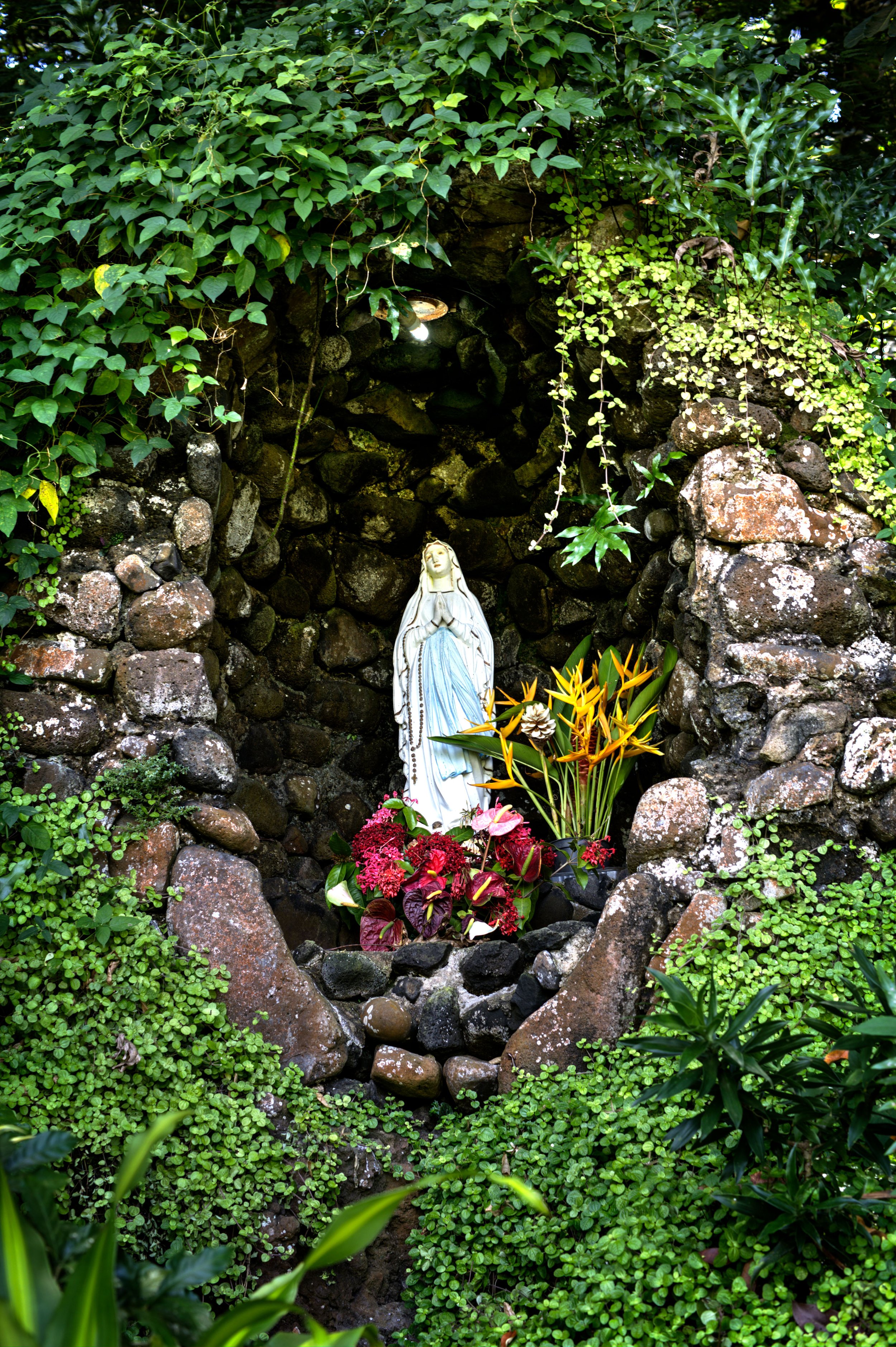
An HDR rendition of the religious creche.

An amazing panorama from Belvedere Lookout on Moorea, made more impressive by HDR treatment.
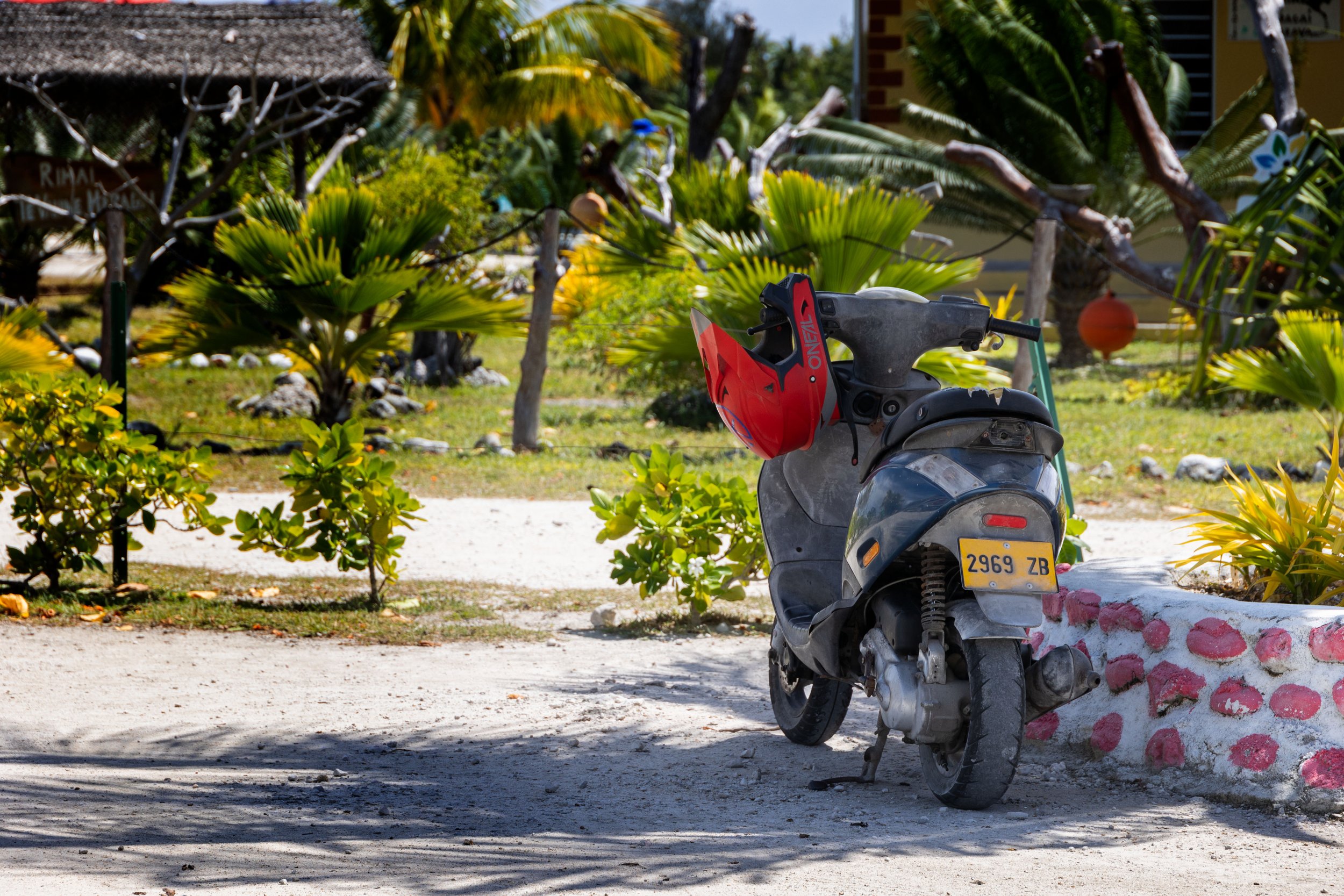
I took only a few photos on Fakarava, mostly because the day was unbearably hot AND humid. The atoll's elevation cannot be greater than a few dozen feet, so it is of great risk of being swamped by sea rise associated with climate change.
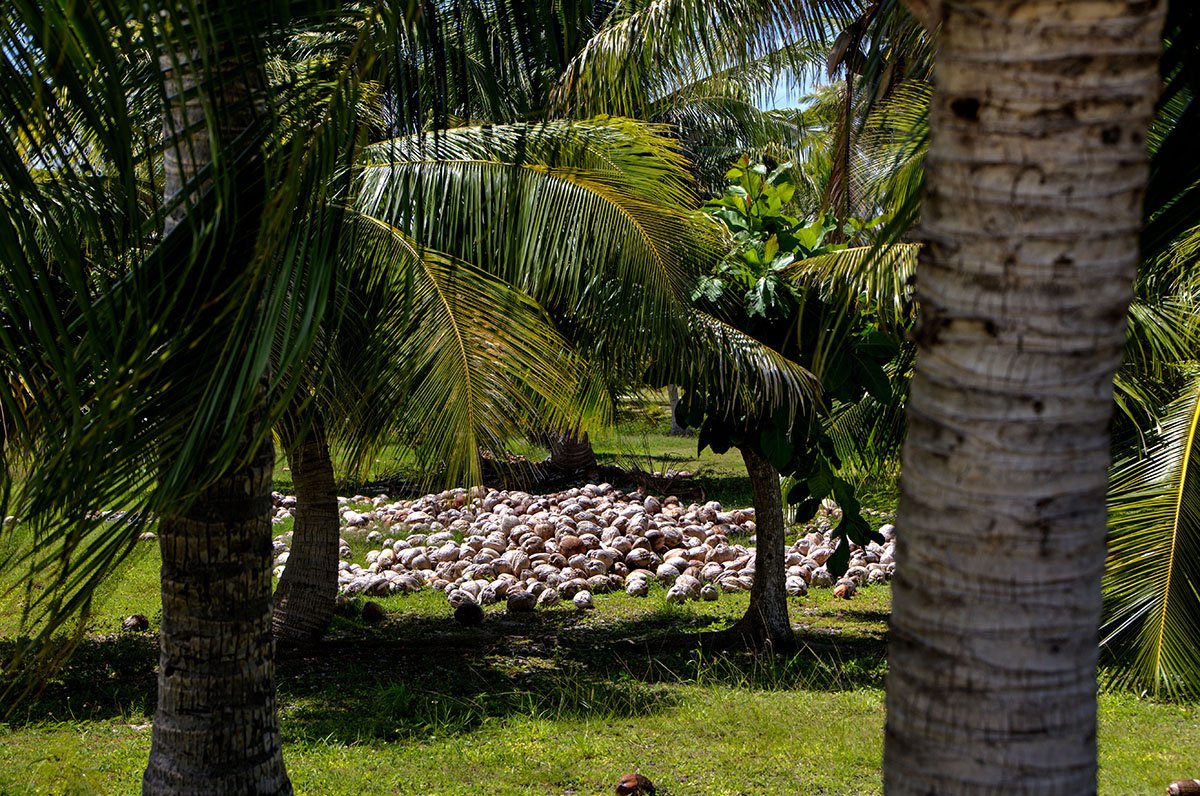
A field of ripe coconuts, seen through Fakarava's palm trees.
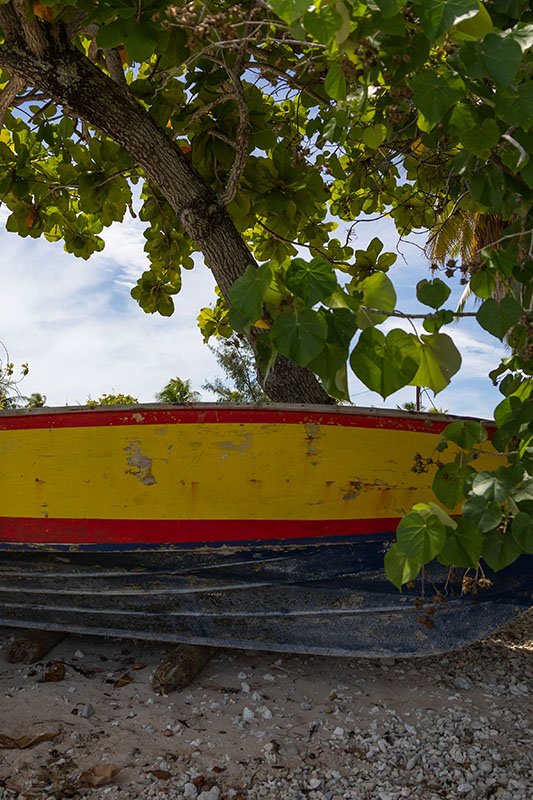
A miscellaneous derelict.
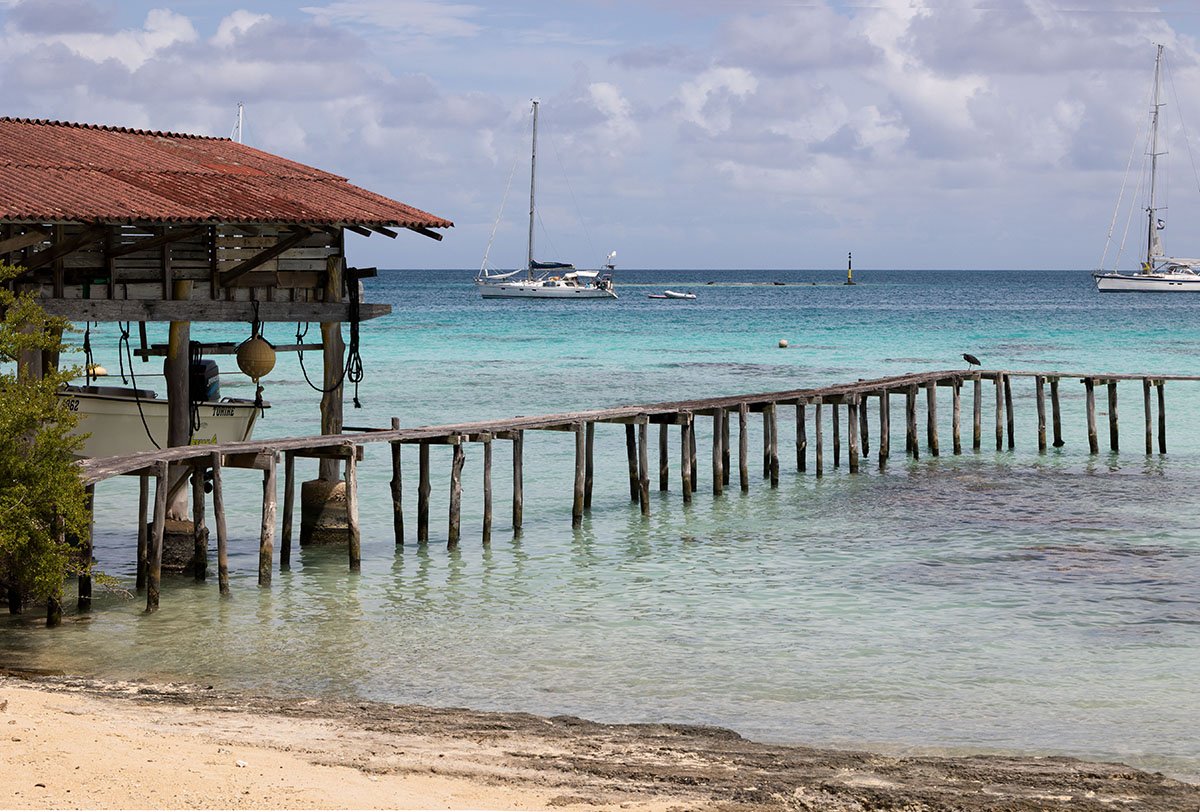
A final scene from Fakarava, as walked back to catch the tender.

A trio of Polynesian "greeters" at the tender landing point on Nuku Hiva. I sent them this photo and a number of others.

Five comely dancers showing their beautiful features adorned with feathers (source unknown) and palm fronds. Note the tattoo on the one gal's thigh.

Another comely dancer on Nuku Hiva.

As we returned to the ship via tender, this fellow paced us in his modern outrigger canoe (actually, more like a kayak).
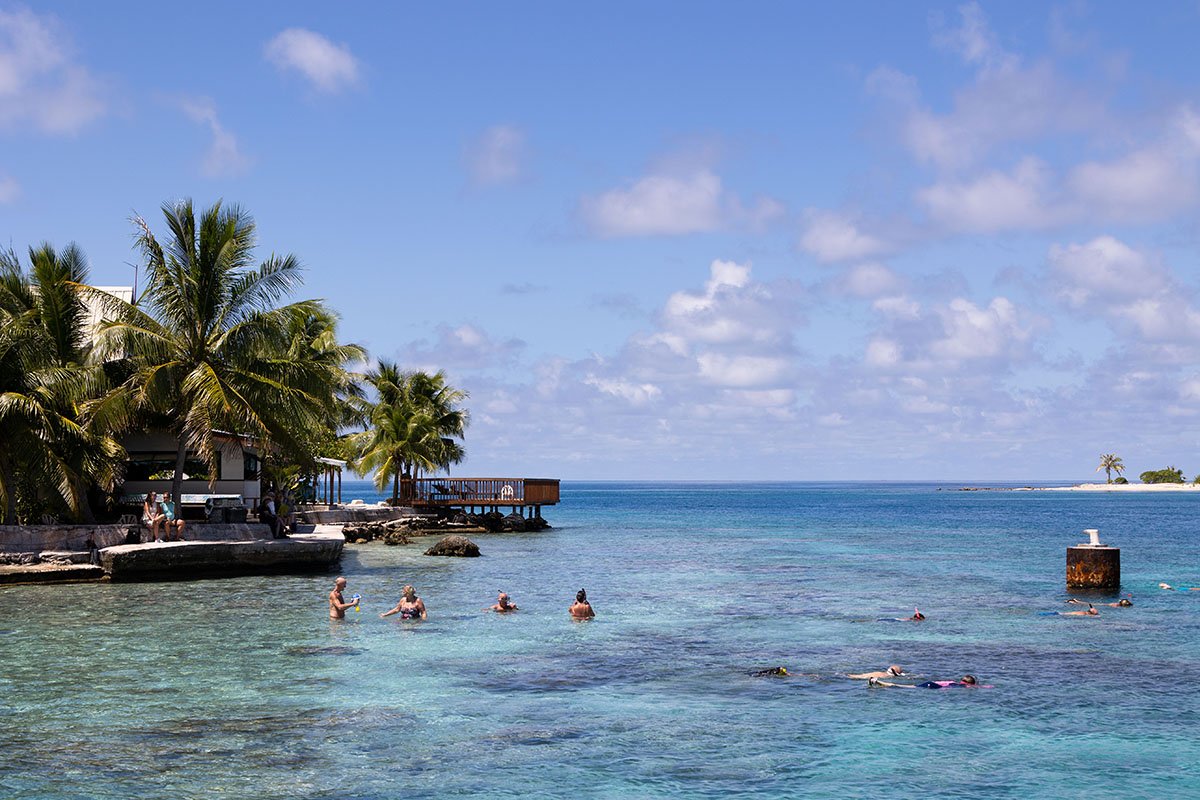
Rangiroa was another atoll with minimal activities offered, if you weren't able to swim with sting rays or snorkel.
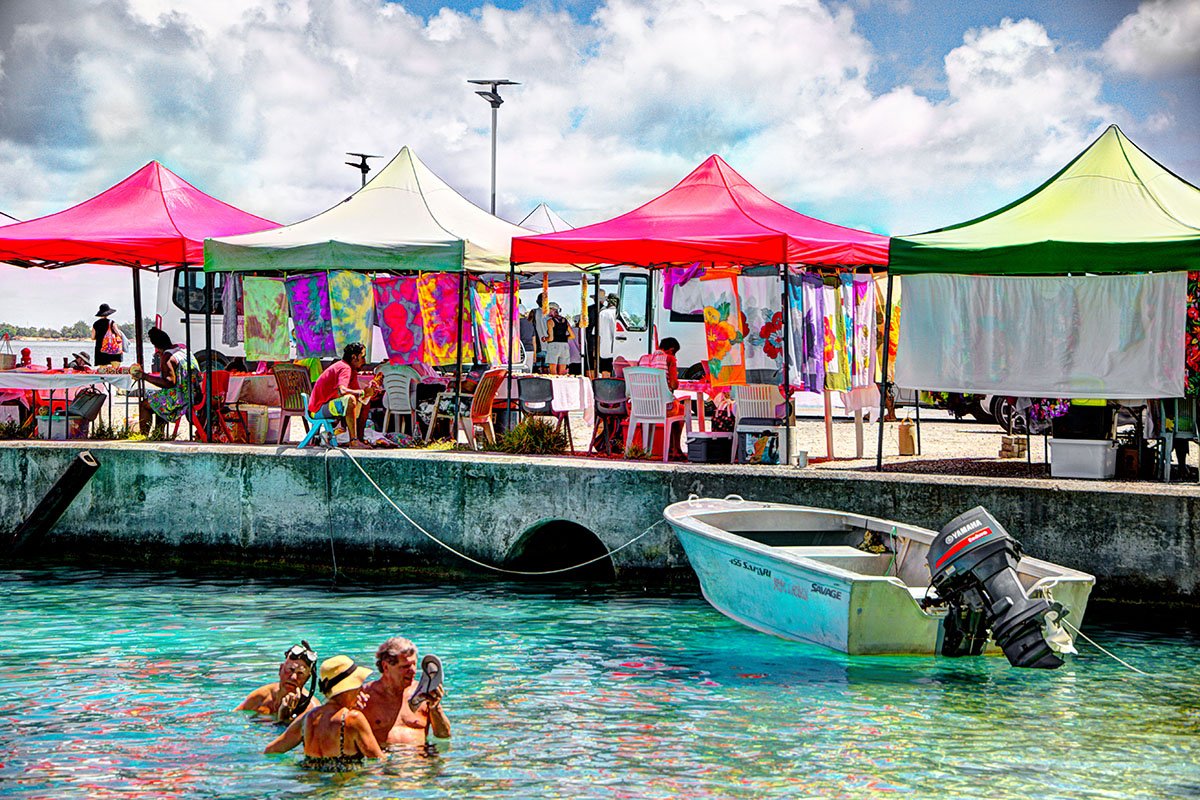
An HDR treatment of the arrival area.

More HDR of the arrival area, with a wider view.

A couple fellows with their outrigger kayaks.
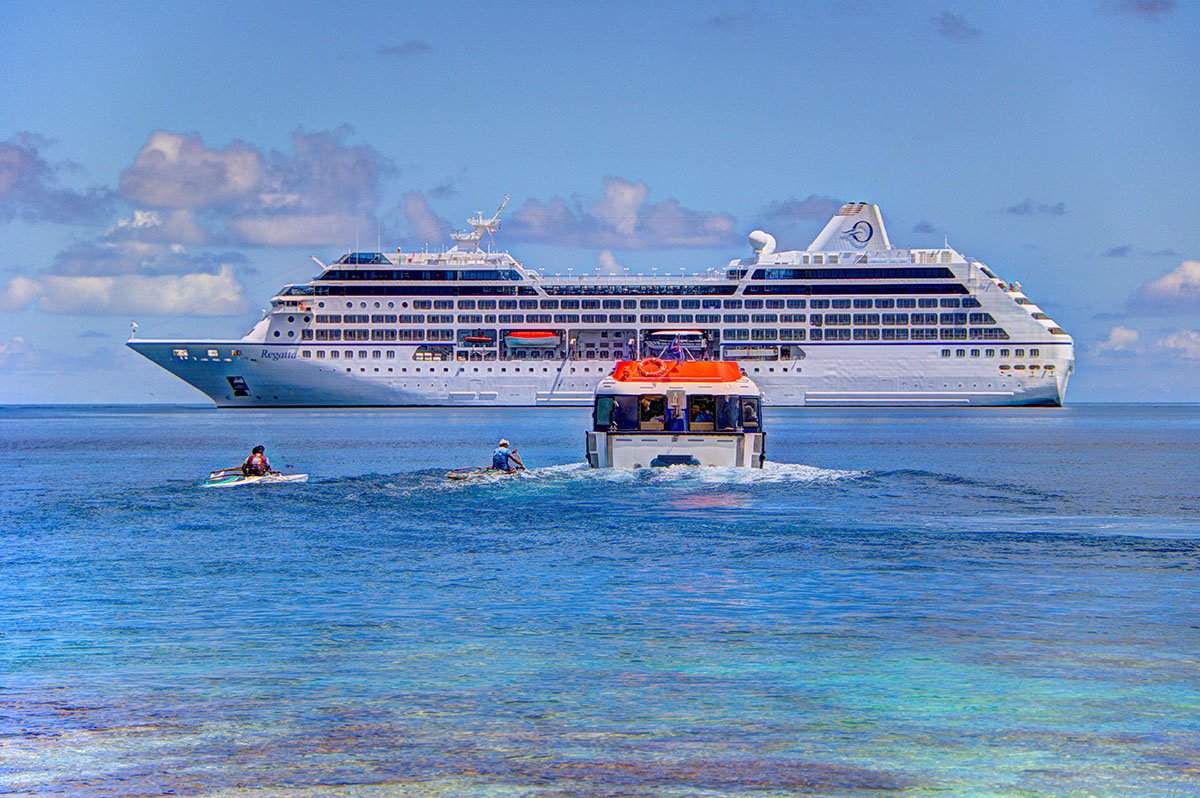
A dynamic portrait of "Regatta," a returning tender, and a couple of Polynesia outrigger kayakers on an intercept course.

These atolls and their associated islets yield beautiful photos of sea, sand and sky. (This one again in HDR.)

Another HDR portrait of our ship, swimmer in foreground beside a corrupted ship mooring point.
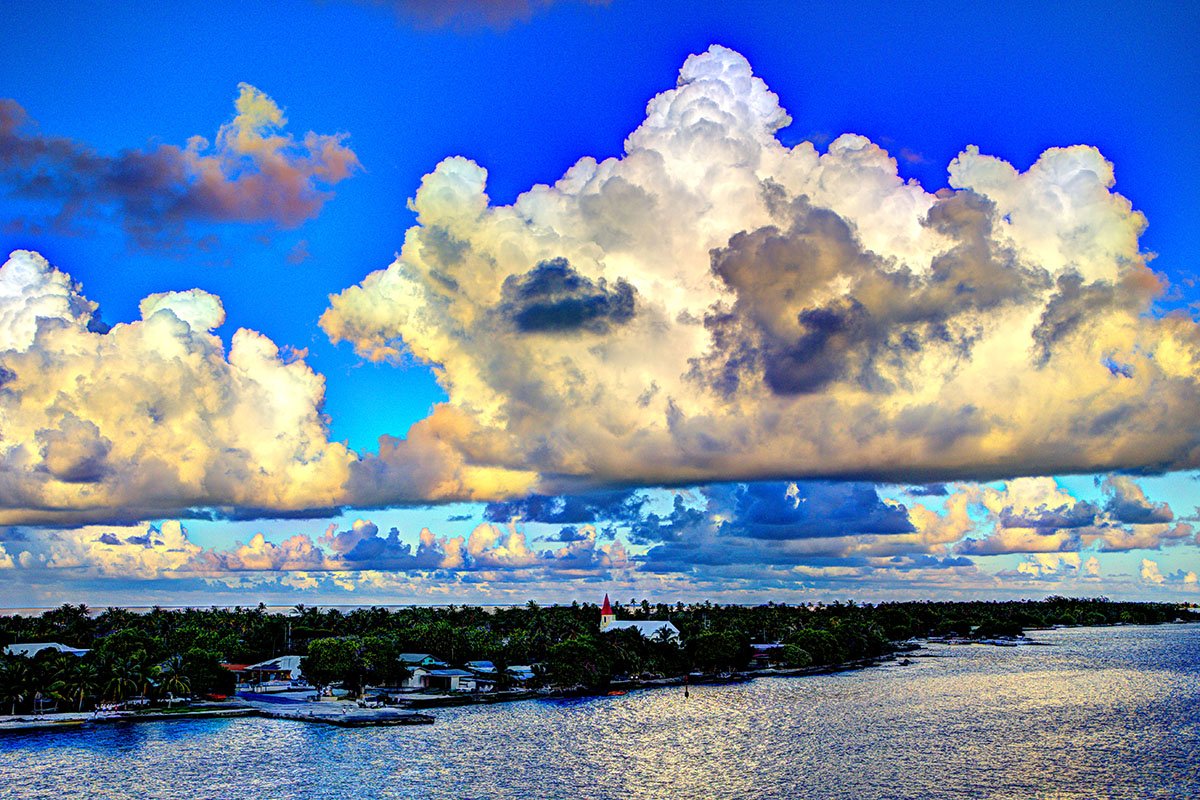
Dusk as we departed Rangiroa, clouds still lit by the setting sun (HDR).
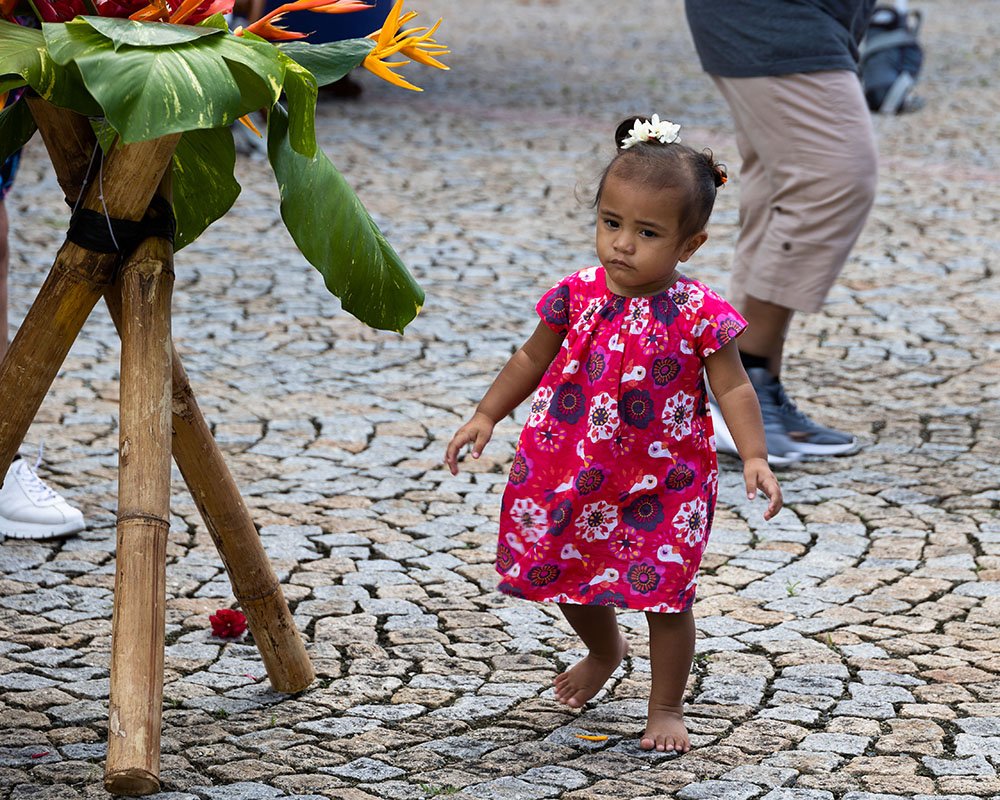
A very junior native greeter upon our arrival at Raiatea.
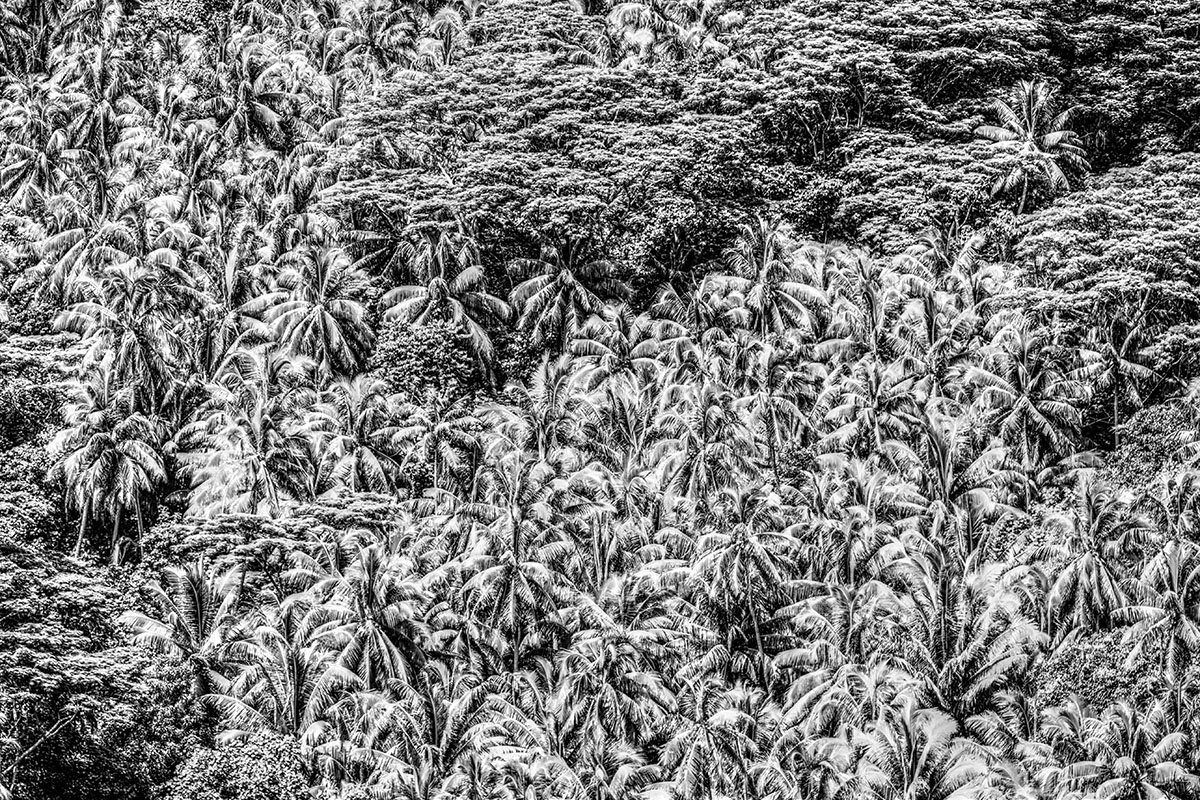
Palm trees abstraction.
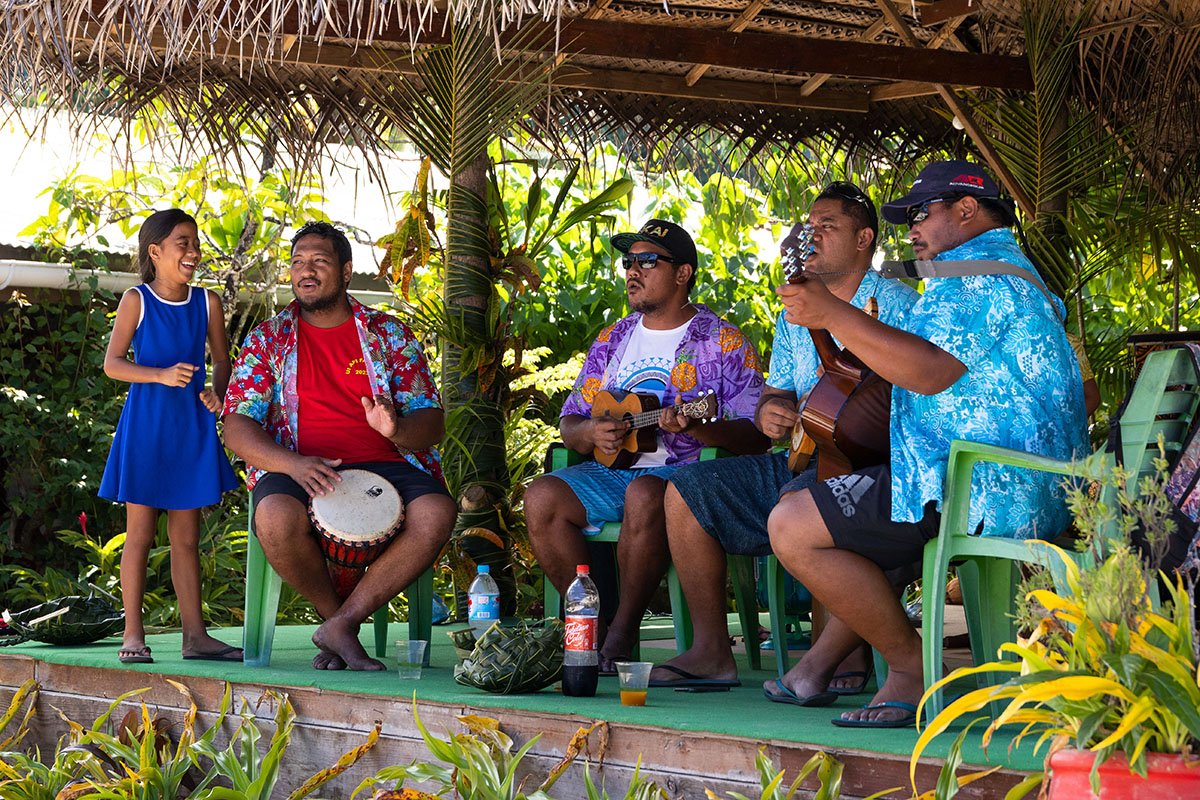
The ensemble playing during our lunch at the pearl emporium.
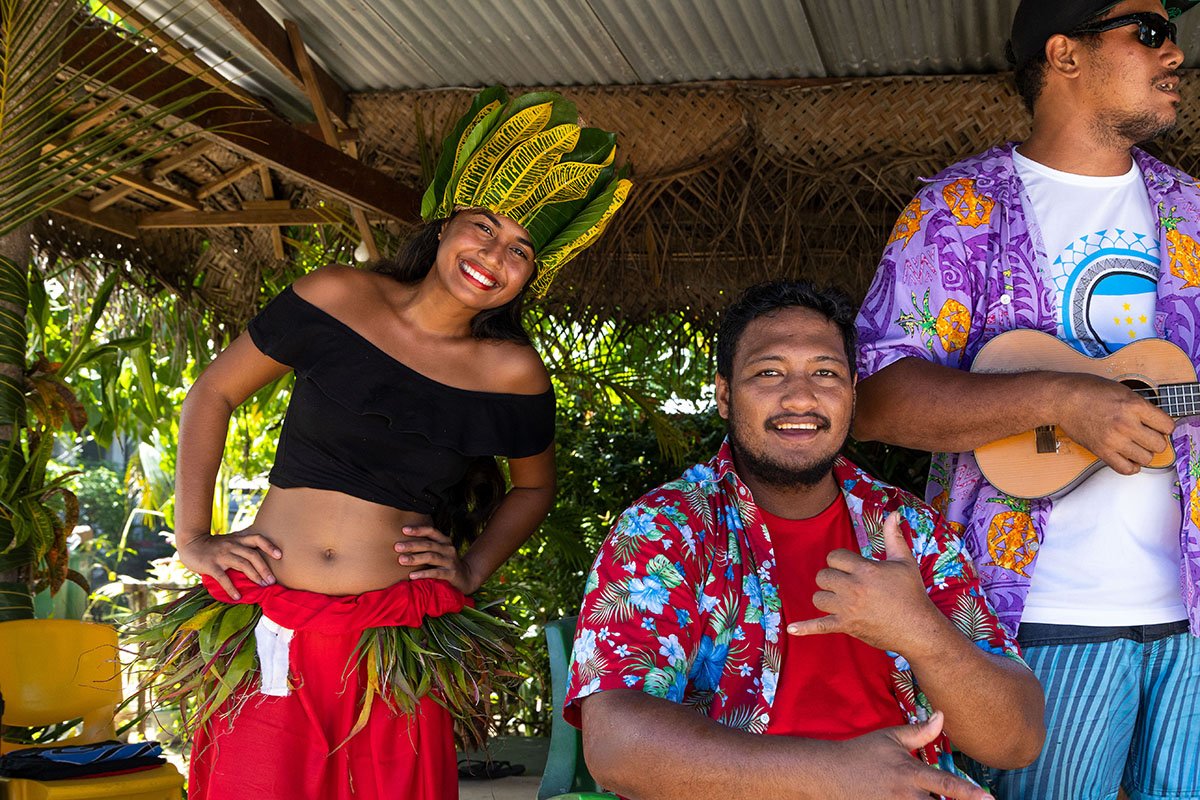
One of the Polynesian dancers who performed during our lunch. The troupe had a nine-year-old gal whose hips were entrancing, even at her young age. I have a video, but don't think it can be loaded here (for technical reasons, not prudery).

Bora Bora as we were arriving. Clouds hang over the two principal peaks, the highest of which, Mount Otemanu, stands at over 700 meters.

Sailors lines, colored by function.

Our good-natured skipper on our Bora Bora sunset cruise.

Our catamaran rounded the headlands.

And then passed some of the more posh hotel accommodations, facing out to sea.

As sunset approached. During an earlier sunset on this cruise I caught the fabled green flash when, for that last moment as the last sunlight passes over the ocean, the sun flashes green for a fraction of a second, before sliding from sight for the evening. Once thought to be a myth, a green flash is now understood to occur when the Earth's atmosphere acts like both a prism and a lens. Google it.

The ship sailed on as the sun sank lower.

An outrigger canoe race, seen from the ship, at a distance.

The best photo I was able to take of Bora Bora's peaks. (HDR.)

Our 'round-the-island "Le Truck" conveyance had these flowers and greenery tacked over doors and windows. We did not understand their significance until we pulled over and were told to throw the vegetation from the bus. Busy land crabs quickly harvested what they could and hauled it back to their warrens, just holes in the ground no doubt decorated with earlier flowery offerings.

A panorama showing the Bora Bora lagoon and barrier islands riding atop the atoll beyond.

Pacific Ocean waves breaking on the coral atoll beyond the placid waters surrounding Bora Bora.
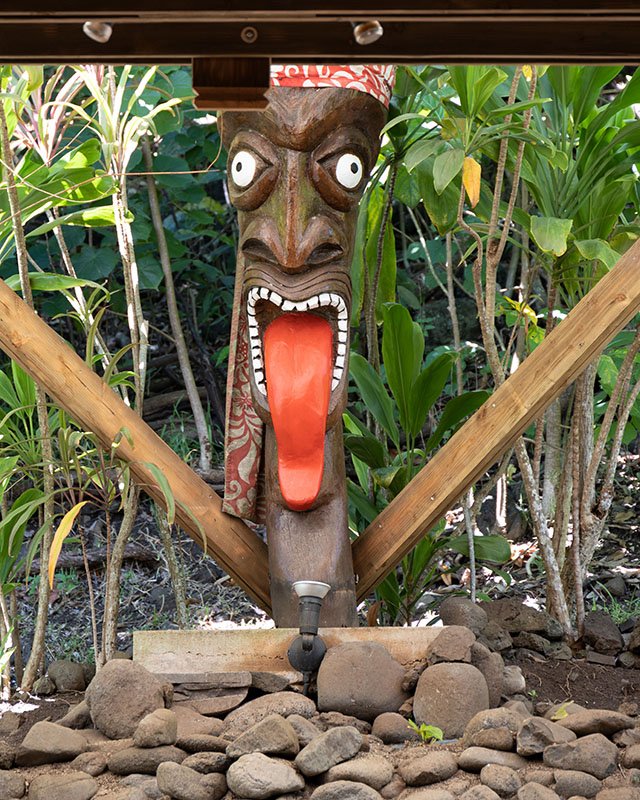
"Bloody Mary" was a character in James Michener's "Tales of the South Pacific, later made memorable by Juanita Hall in the movie musical "South Pacific." Given Michener's love for Bora Bora (although it was apparently NOT the inspiration for Bali Hai), there naturally had to be a restaurant of that same name. We dined there our evening overnighting at Bora Bora (an experience in its own right), and then photographed the Bloody Mary tiki the next day.

An interior HDR of Bloody Mary. Not much back support while dining, which lessened its appeal for me.